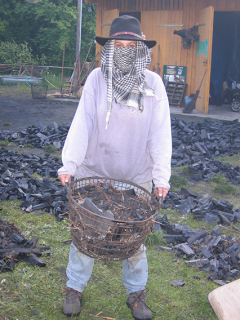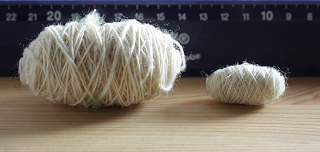A few days ago (yes, I'm slow) I stumbled over the
video of Susan Boyle singing "I dreamed a dream" in the talent show "Britain's Got Talent". In the following days, I read a bit about her (not so much to find) and Paul Potts, her predecessor-in-spirit. And this whole thing got me thinking about dreams and dreams come true.
As far as I can see, Susan Boyle tried to get onto stage seriously for ages. It was not her first public act, nor was it her first try for fame - she already appeared on another TV show some time earlier (but with no success). Now the media are in disagreement whether she can really sing or not, whether she is a nice lady or a bitchy person, whether she is loved because she's a singing nobody shooting to fame or because she's a star that just had to wait a long time to be born. And I just read an article by Spiegel Online (german news thingie) saying it's all a mass media super-hype and like Paul Pott, she won't make it after her first few weeks of fame.
I think the important thing is not whether Paul Pott or Susan Boyle will remain successful - or even stars - for a long time. The important lesson, for me, is that both had a dream and tried to make it come true. Only time will tell how well somebody shooting to fame can adapt to the new surroundings and the new style of life, and nobody knows whether Paul and Susan will one day regret their successful appearance on the talent show.
But that's always the thing with dreams, or with great plans: that nobody knows how it will turn out in the end. You just have to decide whether you want to risk failure or whether you prefer to go on dreaming forever. And once you have decided, you "just" need that dash of luck for a go.
And then? Once your dream is live, you can't stop. You can't let go, and you'll never be safe again. As long as it is only a dream, it's easy to forget about the little hitches in the process, the bad times, the sorrows, the dangers. You just imagine the upsides and maybe daydream about how you handle things, competent and sure the whole time. The dream come live might be a different thing entirely, and you will probably face aspects that you had not wanted. And because you can fail when living the dream, it is not safe anymore. You are not safe anymore.
The bigger the dream, the bigger might failure be. My dream was a lot smaller (and easier) - I only wanted to find out things about medieval garments. To find out how they were made, how it all connects, why medieval clothes look like they do. As stupid as that might sound, writing my thesis was fulfilling my dream. It hasn't brought me to fame, it won't make me rich (unless I win the lottery), but it made me very, very happy. When I started out, I met with a lot of sceptical comments and looks, and people even outright told me that a project like this wouldn't work. Still, it did. There's much left to find out about, and there always will, because clothing is so variegated and multifaceted, and there's so little left that we will always have to speculate - but I made my try, I feel it was successful, and my work will serve as help or starting point for others, which is an incredibly wonderful thing to achieve.
I had a dream, and I had a chance to go at it - I was incredibly lucky in having so much support, moral and financial, for my try. It took some time, and I'm not sure how it will all turn out in the end, but I feel very privileged because I could give it all a try. It could have gone totally and utterly bad, though, and something can still happen and cause trouble. And as long as my book, and therefore, the dream-come-true exists, something can always happen - maybe somebody finds out that everything I have written is complete and utter bullshit (which would be science, but unpleasant for me nevertheless). So in that aspect, I'll never be safe again. And I'll gladly give up this safety as a price to be paid, for my dream coming live. I'm happy with how it all turned out.
For Susan Boyle, I hope that she will be happy with her dream come live - that she will adapt to the new situation and still stay herself. That she won't regret her shot at fame and a singer's career, however it might turn out. And that she is willing to pay the price for a dream coming into existence.






